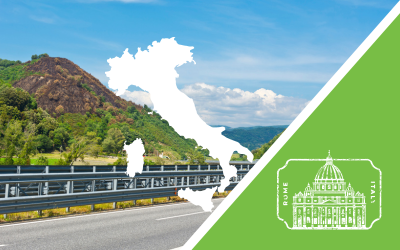Most toll stations in Italy operate according to the closed system. Here the driver must take a ticket when entering the motorway and pay the toll when leaving the motorway.
The toll costs are calculated on the basis of the kilometres travelled. If the ticket is lost, a penalty fee is due and the highest possible amount must be paid at the exit exit station.
Note: A ticket or receipt must always be taken for the route, even if the barrier at the toll station is already open (e.g. staff on strike, technical defect, traffic jams)! You can make the necessary additional payment within 15 days using the ticket or "Mancato pagamento" receipt.
The yellow lanes are reserved for users of the Telepass system and may only be used by drivers with a toll box. toll box.























.webp?ts=1751463967)